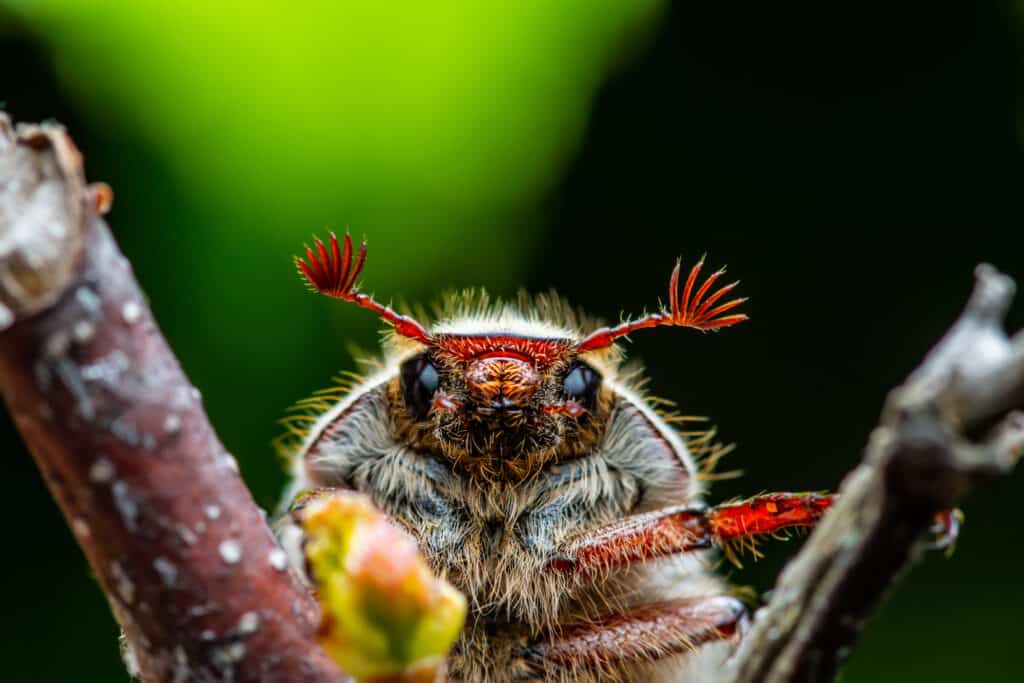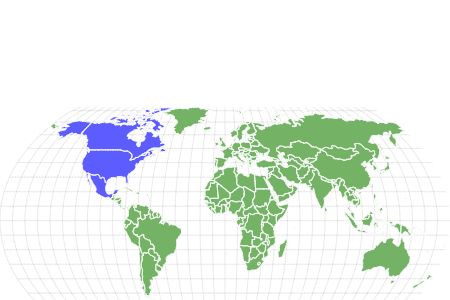May Beetle
May Beetles are also known as June Bugs Because they’re more active during the month of June
Advertisement
May Beetle Scientific Classification
Read our Complete Guide to Classification of Animals.
May Beetle Conservation Status
May Beetle Facts
- Name Of Young
- Larvae
- Fun Fact
- May Beetles are also known as June Bugs Because they’re more active during the month of June
- Biggest Threat
- Parasitic flies (family Pyrgotidae)
- Diet
- Herbivore
- Lifestyle
- Nocturnal
- Favorite Food
- ash, oak, crabapple, and other trees with broad leaves
- Type
- Scarab beetle
- Common Name
- June Bug, May beetle
View all of the May Beetle images!
May beetles are also known as June bugs because they’re more active during the month of June.
Summary
The name ‘May beetles’ applies to beetles in the genus Phyllophaga. They’re sometimes called June bugs because they tend to be more active and visible during that month of the year. May beetles are native to North America. The larval stage of May beetles is harmful to crops. They feed on plant roots, causing water stress and ultimately killing the plant.
May Beetles Species, Types, and Scientific Name
May beetles are insects in the family Scarabaeidae (also called scarab beetles). They’re known to have an oval and stout body with clubbed antennae that can be fanned out or retracted. The larvae of insects in this family are typically whitish and C-shaped. They live underground, where they go through the different stages of growth and emerge as adults. There are up to 30,000 species of scarab beetles found all over the world.
May Beetles are also referred to as June bugs or June beetles. Their common name is a reference to the fact that these bugs are more commonly seen around May or June. They belong to the genus Phyllophaga, a large genus of bugs with at least 900 species. The generic name is a greek word that translates as “leaf eaters.”
Appearance: How to Identify May Beetles

Adult June bugs feed primarily on tree leaves. They eat the leaf at the margins but may sometimes eat all the way to the midvein.
©nechaevkon/Shutterstock.com
There are several species of insects in the genus Phyllophaga. They all look similar, with only a few differences between them. They’re typically brown, rusty, or black in colors with no patterns, spots, or stripes. The ventral view of their body is typically hairy. Adults range in size from 1.2 to 3.5 cm (0.47 to 1.38 in)
May beetles have hefty and oblong bodies. They have a hard and shiny elytron that covers their wings. They also have jointed legs which they use to cling to door frames, window screens, and leaves when they’re out in the fields. They’re nocturnal and are attracted to light. May beetles often bump into windows at night. They also congregate around porch lights and other areas with some form of ambient light.
Like other scarab bugs, the larvae of June bugs are c-shaped grubs with brownish or blackheads and 3 pairs of legs. The white grubs are about 8 mm long when they hatch and can grow to a length of up to 40 mm. They have strong mandibles which they use to chew on plant roots.
Habitat: Where to Find May Beetles
May beetles are found in North America. They’re abundant across various locations in the United States, Canada, and Mexico. Adult females lay their eggs underground. The larvae develop into pupa and adult form in the soil from where they emerge in May. As adults, they spend most of the day burrowed into the soil in turf areas. They only emerge at night to feed and mate.
Diet: What Do May Beetles Eat?
Adult June bugs feed primarily on tree leaves. They eat the leaf at the margins but may sometimes eat all the way to the midvein. Common host trees they target include ash, oak, crab apple, and other trees with broad leaves. Farmers are often puzzled by the damage because the insects are not present during the day. They only show up to feed on tree foliage from dusk to dawn, after which they go underground again.
The larvae of the June bugs live underground, feeding on plant roots. Their feeding activity can disrupt the uptake of water and nutrients and may even kill young plants with poorly developed root systems.
What Eats May Beetles?
Some flies in the family Pyrgotidae go after May beetles and lay their eggs under the beetle’s elytra. When the eggs hatch, the larva enters the body cavity of the beetle and gradually feeds on it until it dies. The larvae of Exoprosopa fasciata (a species of bee fly) also feed on the grubs of June bugs. Different species of wasps feed on June bug larvae. amphibians, lizards, and some rodents do the same as well.
Prevention: How to Get Rid of May Beetles
June bugs are not dangerous to people. Sometimes, they’re agricultural pests in orchards, sod farms, and groves. But in most cases, their population is usually too low to cause significant damage. They also don’t live for a long time and are only around in your garden for about 3-4 weeks. Most people still consider them a nuisance, especially since they tend to go indoors or congregate around doorways and windows. The larvae form of this insect is more of a threat to agricultural plants because it feeds on plant roots.
The best form of control is to keep plants healthy and invigorated through proper care. Irrigation and proper fertilization can minimize the damage to the plants. The grubs thrive better in dry soil, so regular irrigation can also help keep their population under control. In cases of serious infestation, some contact insecticides such as carbaryl, lambda-cyhalothrin, and cyfluthrin can work against adult May bugs.
Related Animals
View all 164 animals that start with MMay Beetle FAQs (Frequently Asked Questions)
Are May and June bugs the same thing?
Yes, May bugs are sometimes called June beetles. They’re a group of scarab beetles that are native to North America. They typically appear for a brief period during summer around May/June.
Are May beetles harmful?
May beetles don’t bite or sting people However, adults may damage ornamental plants such as oaks and Christmas trees. They may also infest some vegetables and field crops as well.
Can May beetle fly?
May bugs have flying wings which is typically encased in a hard elytra. Although they can fly, like most beetles they’re clumsy and noisy fliers
Thank you for reading! Have some feedback for us? Contact the AZ Animals editorial team.
Sources
- University of Illinois Extension, Available here: https://hyg.ipm.illinois.edu/pastpest/200807e.html
- Wikipedia, Available here: https://en.wikipedia.org/wiki/Phyllophaga
- Missouri Department of Conservation, Available here: https://mdc.mo.gov/discover-nature/field-guide/may-beetles-june-bugs
- Insect Identification, Available here: https://www.insectidentification.org/insect-description.php?identification=May-Beetle
- Koppert, Available here: https://www.koppert.com/challenges/pest-control/beetles/may-beetle/

















